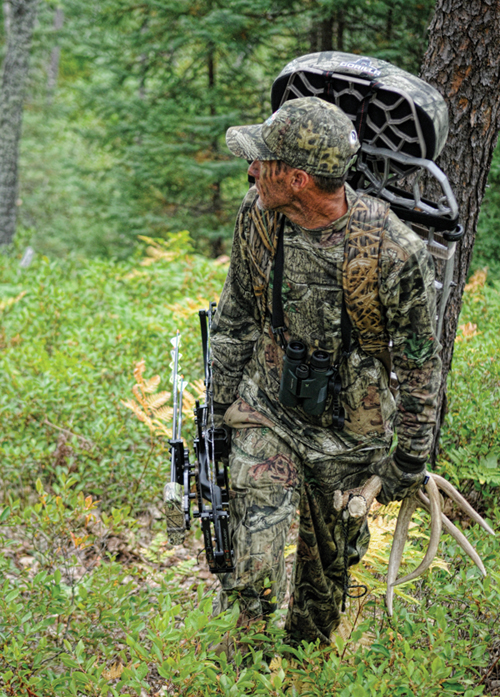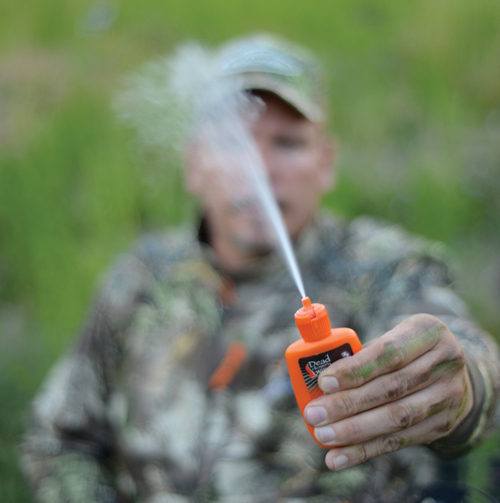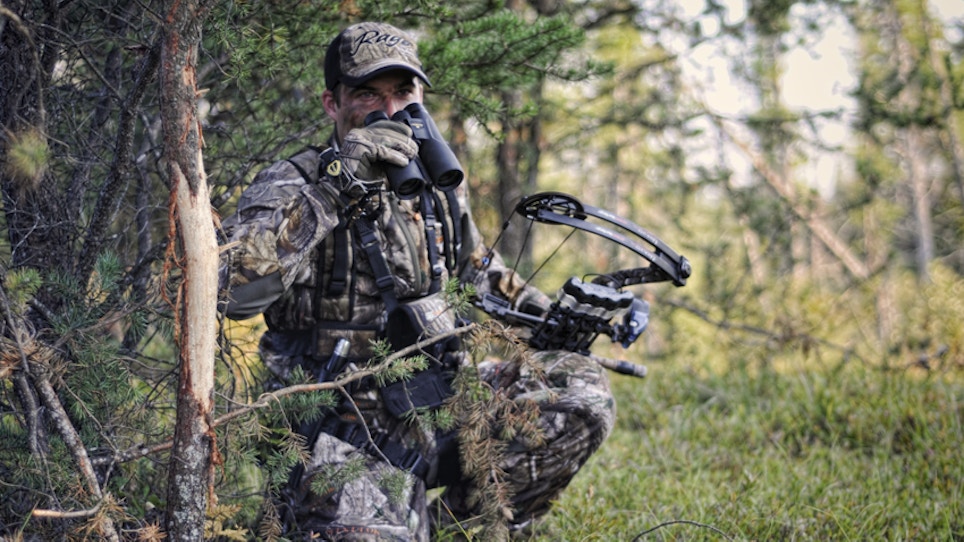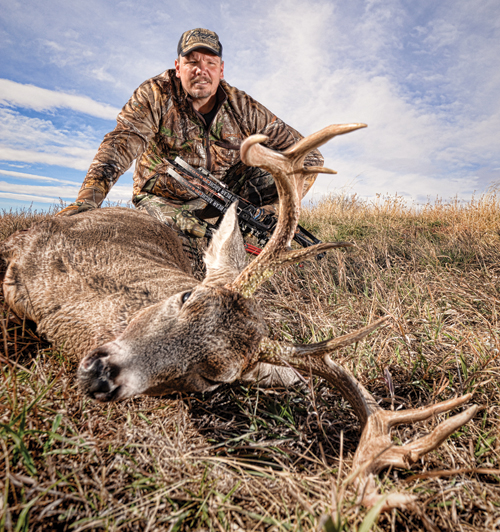Although it’s nice to have a lucky horseshoe in your pocket on occasion, consistently killing mature whitetails involves more than luck. You need to dot your i’s and cross your t’s to bring mature bucks to their knees season after season. Even with today’s high-tech bowhunting equipment and media resources at our fingertips, being a consistent whitetail bowhunter takes dedication in all aspects of the whitetail chess match and countless hours in the woods.
Know His Home
Years ago, an avid Midwest whitetail bowhunter told me, “If you want to kill a good buck just about every year, you have to know his home.” At the time I was a young bowhunter eager to hunt in as many “big-buck” states as my budget would allow, but after several adventures, I learned how important his  advice was.
advice was.
After nearly 15 years of learning, studying and hunting a particular 160-acre chunk of whitetail paradise in southern Kansas, I have arrowed nine Pope & Young candidates, three of which measured above the 150-inch mark. And, sadly, I’ve missed a handful of other studs as well. I wouldn’t say I’m a whitetail expert, but I would argue that I’m an expert on that particular property and on the whitetails that call it home.
Even though the property is only 160 acres, learning every detail took many years. Observing crop rotation both on and around the property allowed me to zero in on specific travel corridors based on the particular crops planted. Localized hunting pressure also forced deer to adjust their patterns, and with the oil boom now sweeping across the region and a noisy oil pump setting on the edge of the property in close proximity to a prime bedding area, I’ve had to make adjustments. E each time I learned something new, I penned the knowledge gained in my journal and made slight changes that often provided opportunities on mature bucks.
If there is anything I can share with a bowhunter looking to put down good bucks year after year, it’s to intimately know every detail about the property you hunt and the deer that call that property home.
Low Impact
Regardless of how well you know your property and the deer that dwell on it, a low-impact routine is a must. Your primary focus should not be on where your stand should be placed, but on understanding how your approach to and from that stand will impact the deer. Regardless of how “prime” a potential setup might be, if a mature buck knows you’re there, your chances of killing him are significantly reduced.
Before you set up a stand, determine if you can get to and from it without alerting deer. Even if you feel it would be the hottest stand on the property, if the perch presents a significant risk of being detected by sight or smell, it won’t take long before the sizzle peters out.
 Although hedge rows and other thick cover can offer sneaky travel routes, creeks, ditches and other low spots should be your first option when available. Before the season, take the extra time to rid these pre-planned travel routes of lay downs and other brush that will hamper your approach.
Although hedge rows and other thick cover can offer sneaky travel routes, creeks, ditches and other low spots should be your first option when available. Before the season, take the extra time to rid these pre-planned travel routes of lay downs and other brush that will hamper your approach.
Your impact equation also needs to factor in breaks. It can be hard to stay out of a slice of your whitetail property for a day or two when you only have a limited amount of time to hunt, but letting a piece rest may be the best decision you make the entire season. If the conditions are right and the area you’re hunting has received little or no pressure, at least for a few days, it may take only one perfect sit to bag the brute you’ve been chasing.
You also need to manage your human scent and always take wind direction into account. Sprays, soaps, suits and boots go a long way when it comes to human scent reduction. When you take wind direction into account for stand placement and approach and exit strategies, you can greatly reduce your overall scent footprint.
Think Outside the Rut
Although just about every bowhunter dreams of killing a rut-crazed buck as he’s seeking a hot doe, early- and late-season options are generally better when it comes to zeroing in on a specific buck.
Both early- and late-season strategies often require more scouting than hunting. Food is typically on a mature buck’s mind. Water could be a factor during the warmer early season as well, so keep that in mind and check early-season water sources regularly, especially if the property you hunt doesn’t offer many refreshment stands.
During the early season, don’t limit your focus to stand locations overlooking food. Find options where bucks travel between bedding and feeding. In the late season, your best bet is typically a food-only location. Why? Sneaking closer to a bedding area with all of September and October’s foliage on the ground is often more risky. Limit your post-rut hunts to afternoons to keep from blowing deer off of food sources.
Mental Persistence
Lastly, and perhaps the biggest overall factor to this whitetail chess match, is your mental persistence. Even with access to great hunting property and following the tips and tactics in this article, consistently arrowing mature bucks is extremely difficult. Once a buck reaches his 4-year-old prime he has mastered his surroundings, and his senses and overall wit are incredible. You’re trying to beat those characteristics and come out of the woods with a heavy rack and backstraps for the grill. Doing so takes consistent mental persistence.







